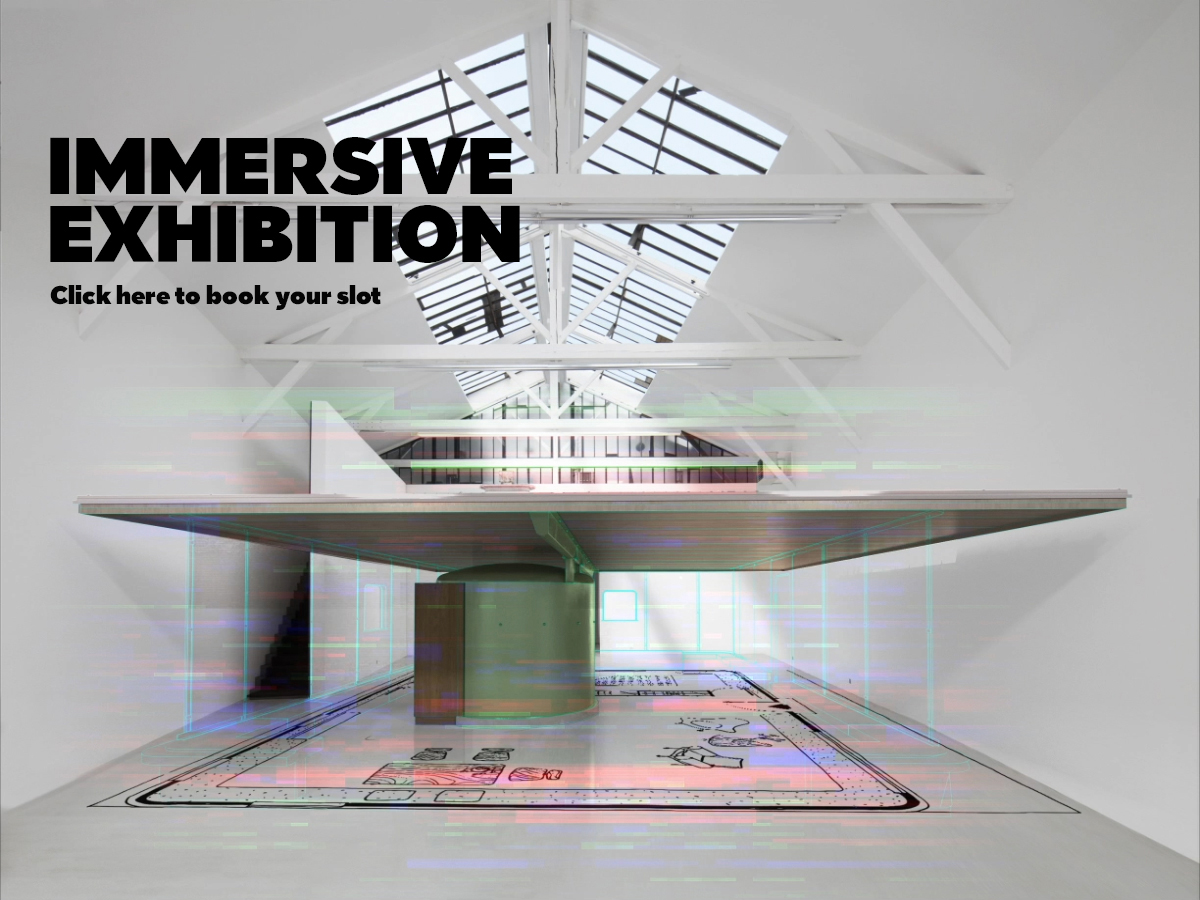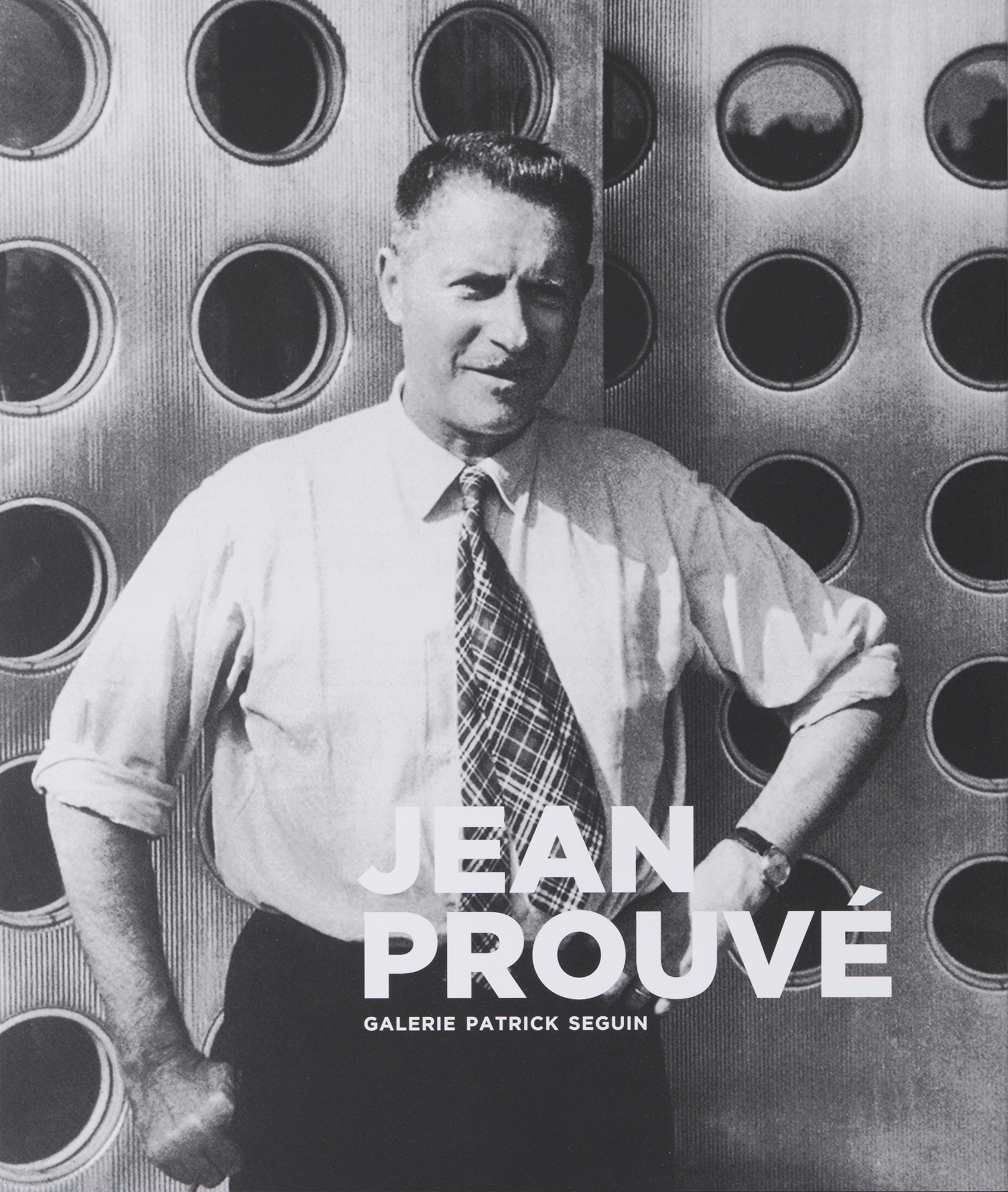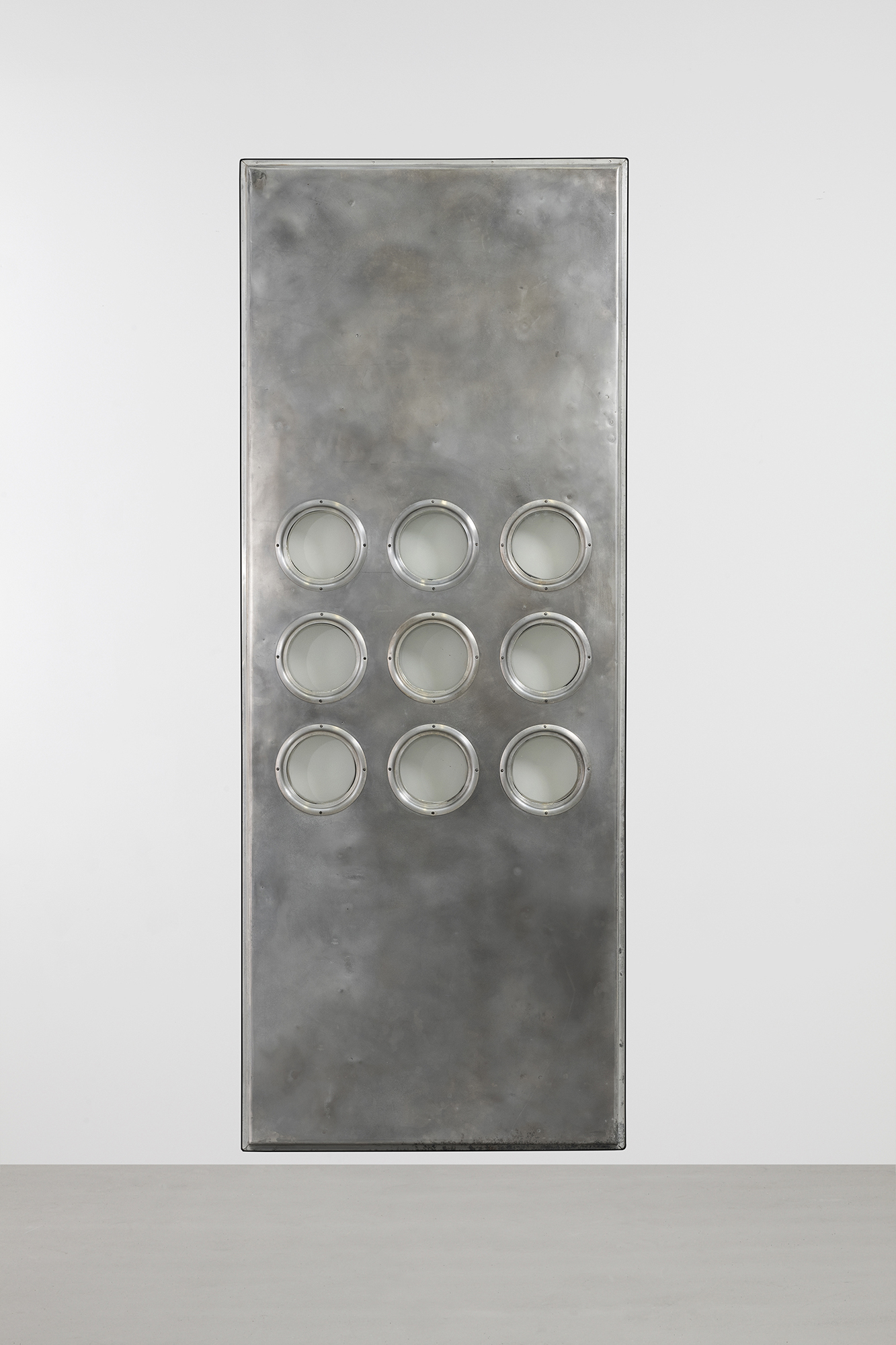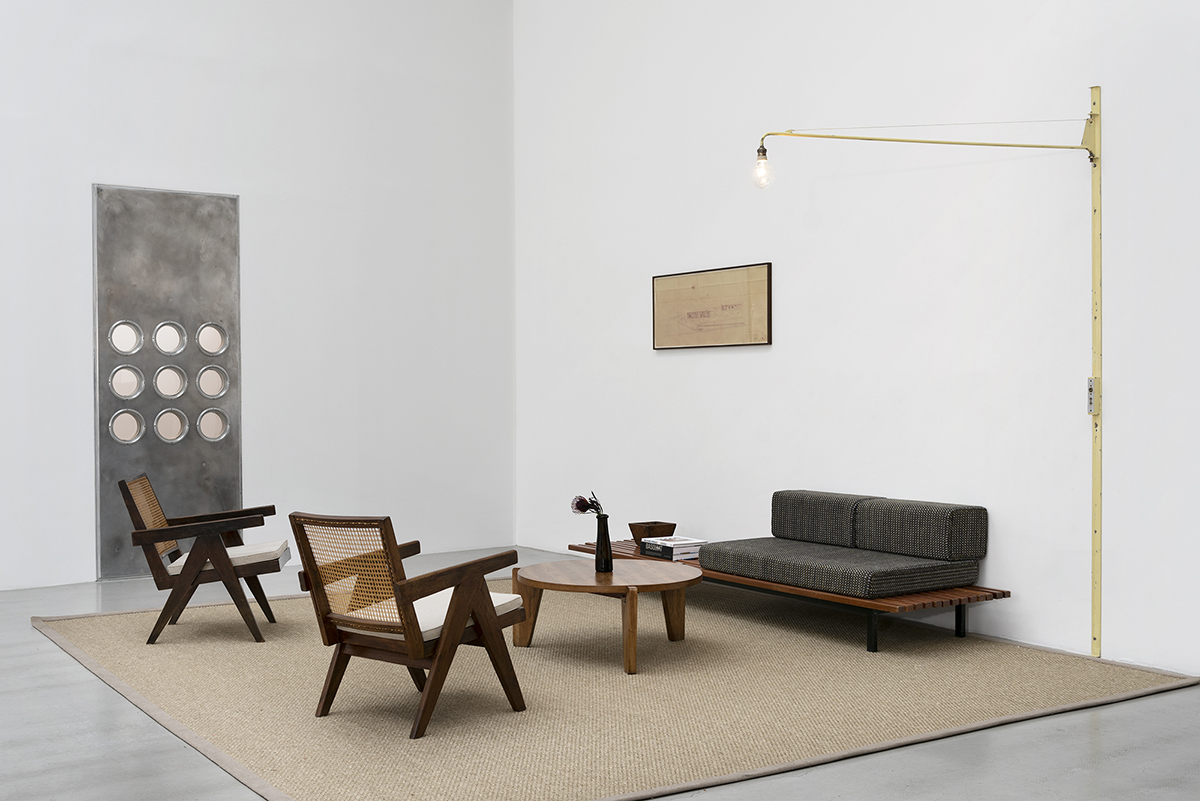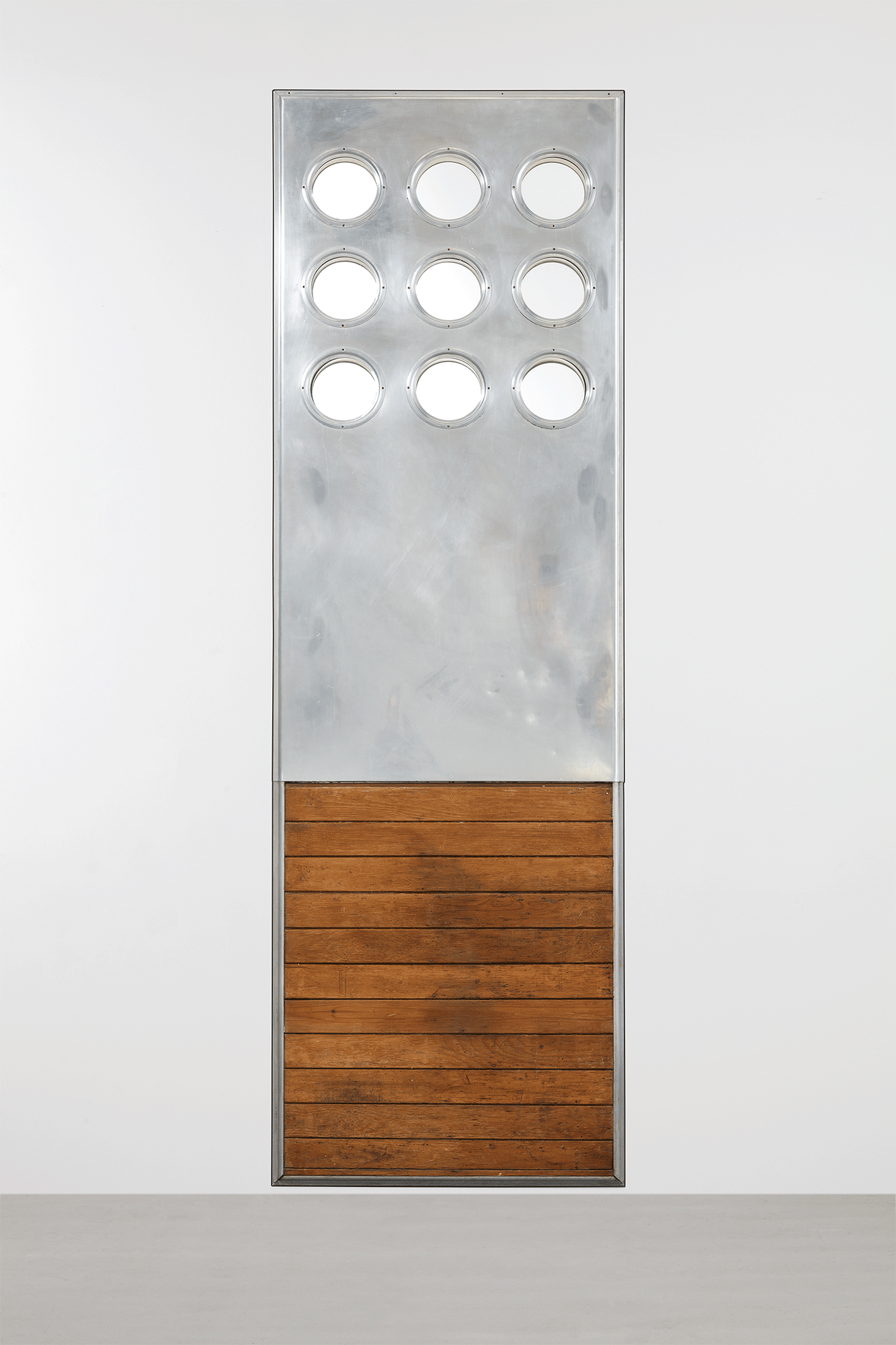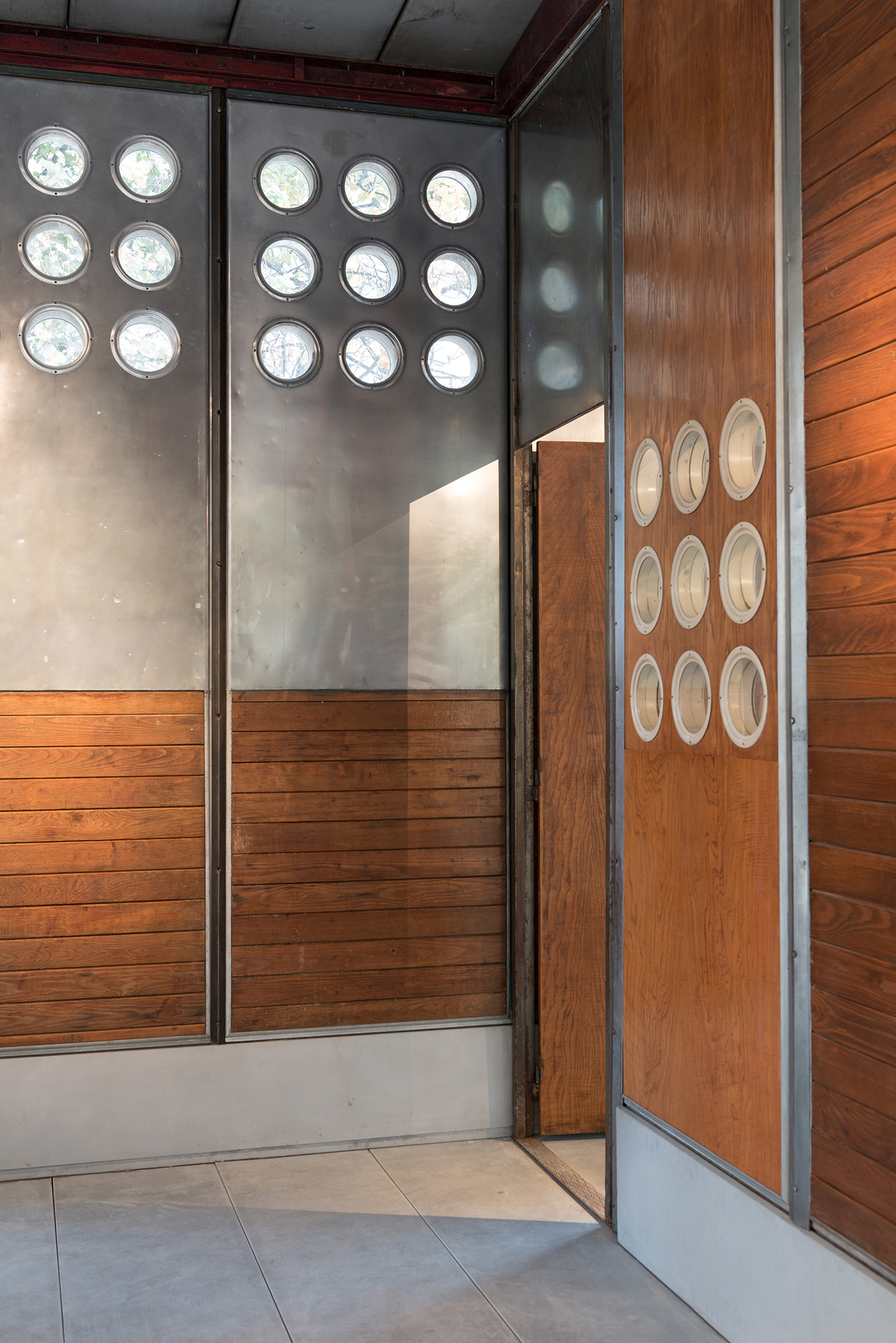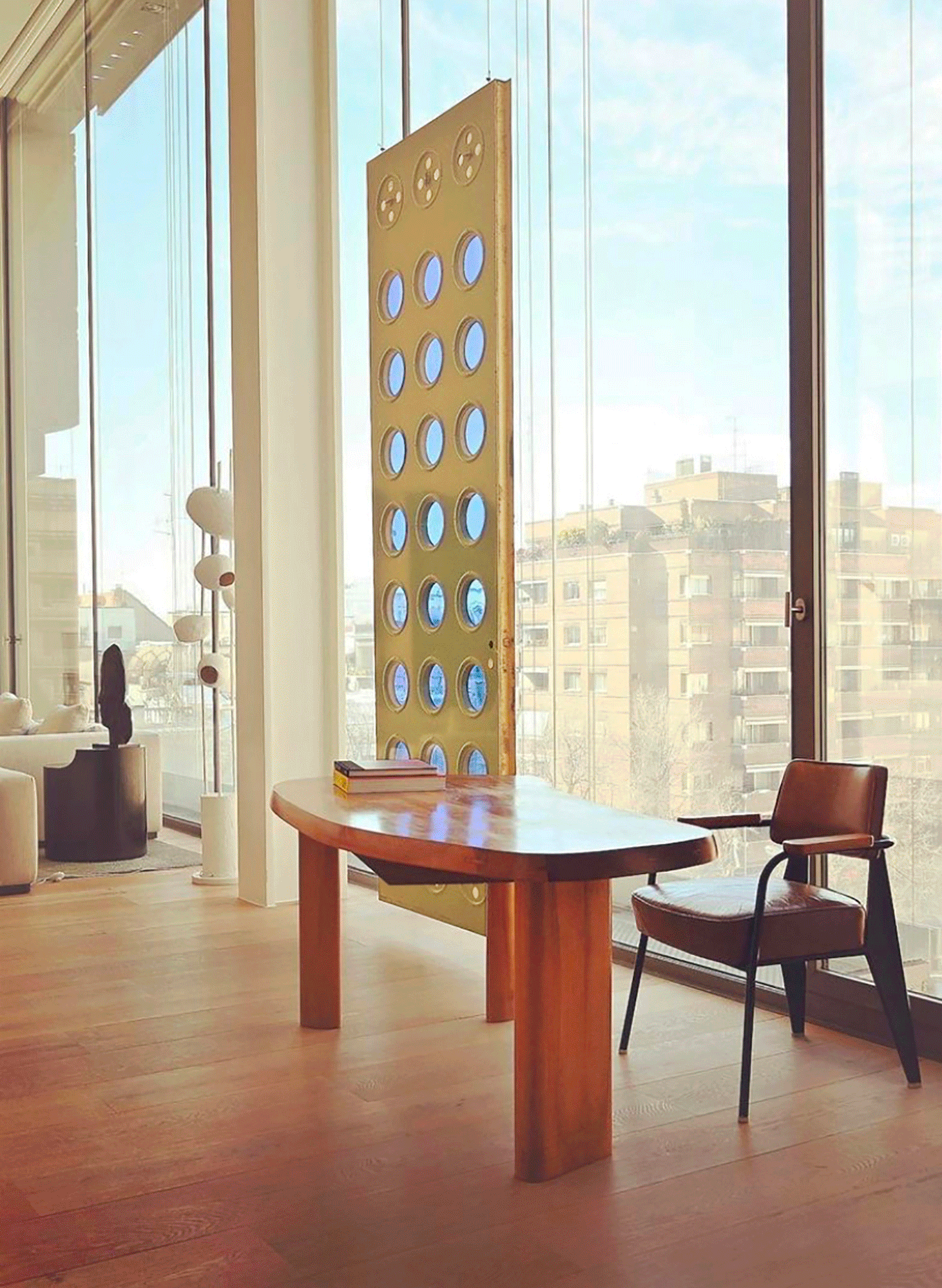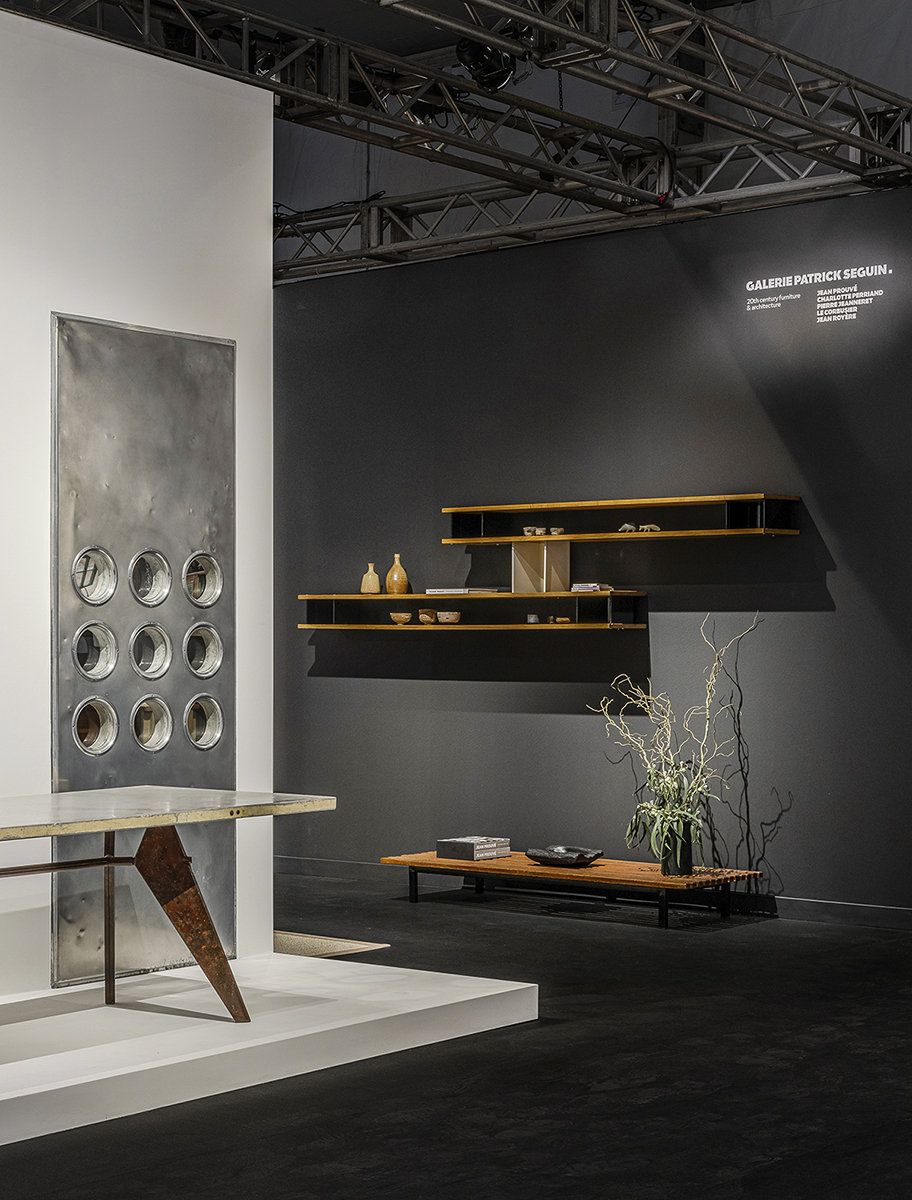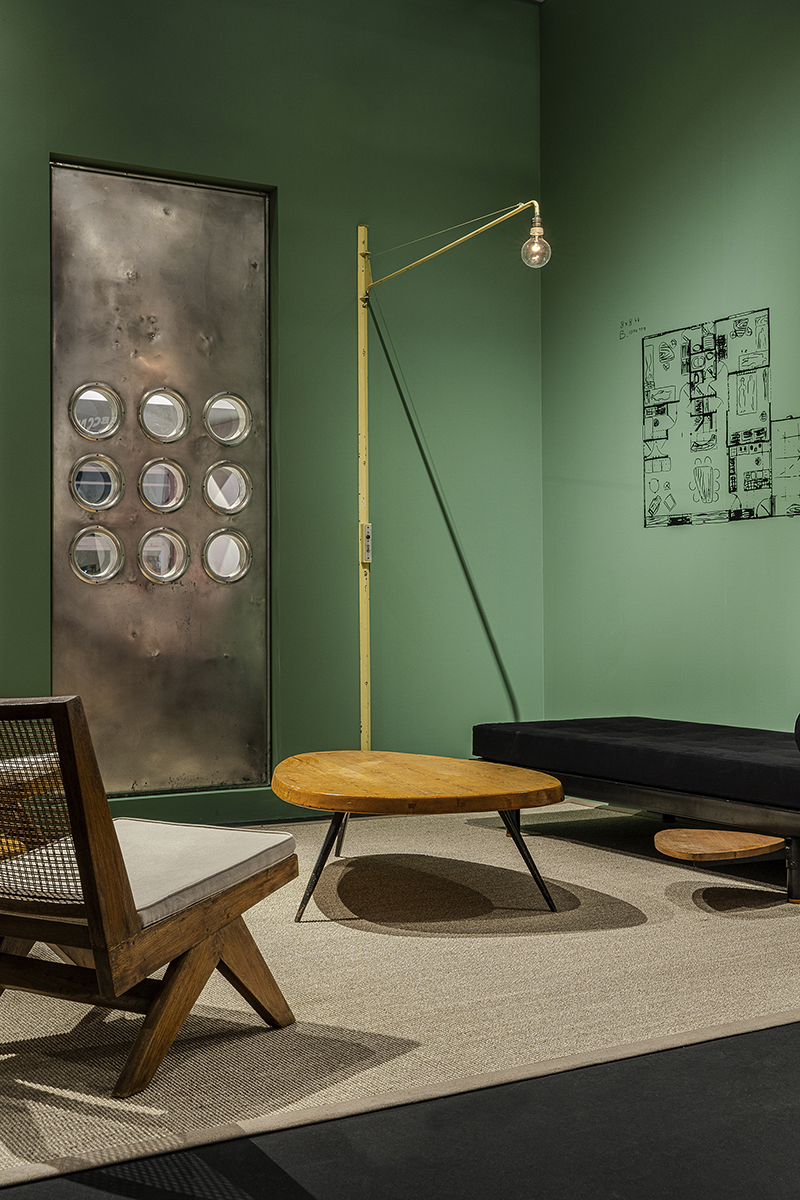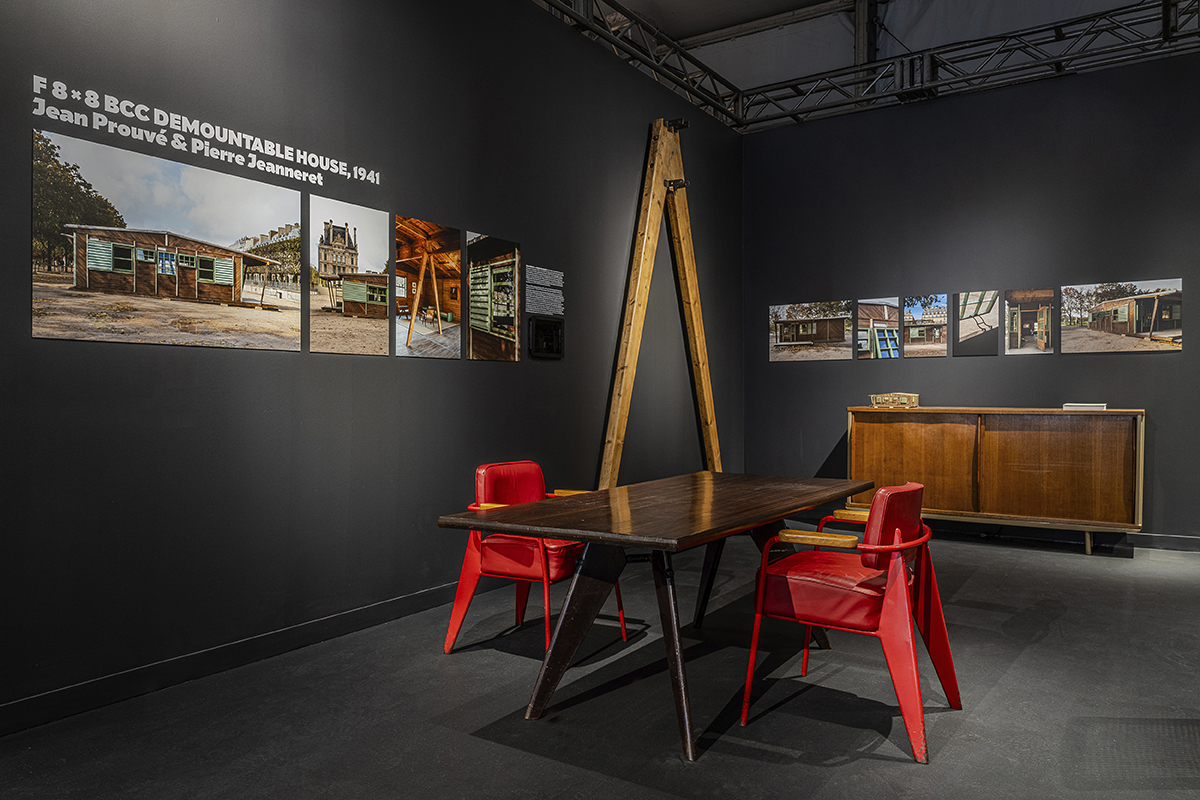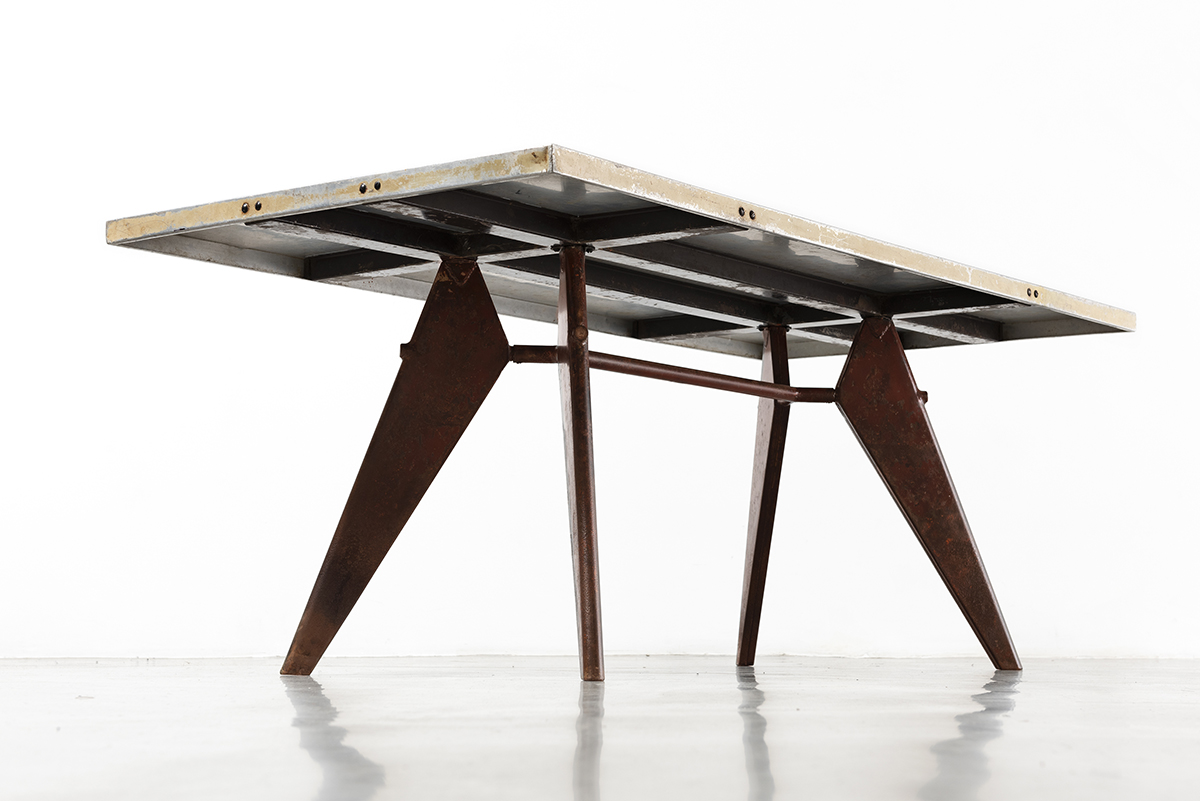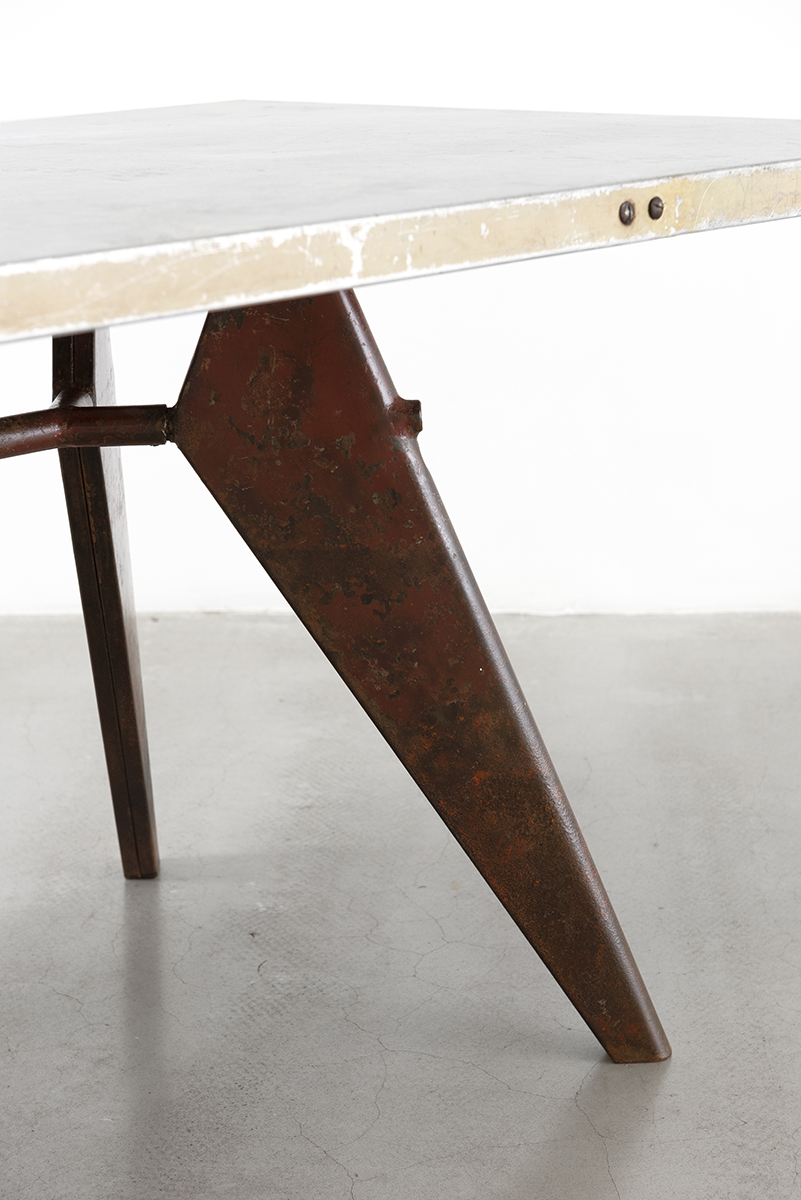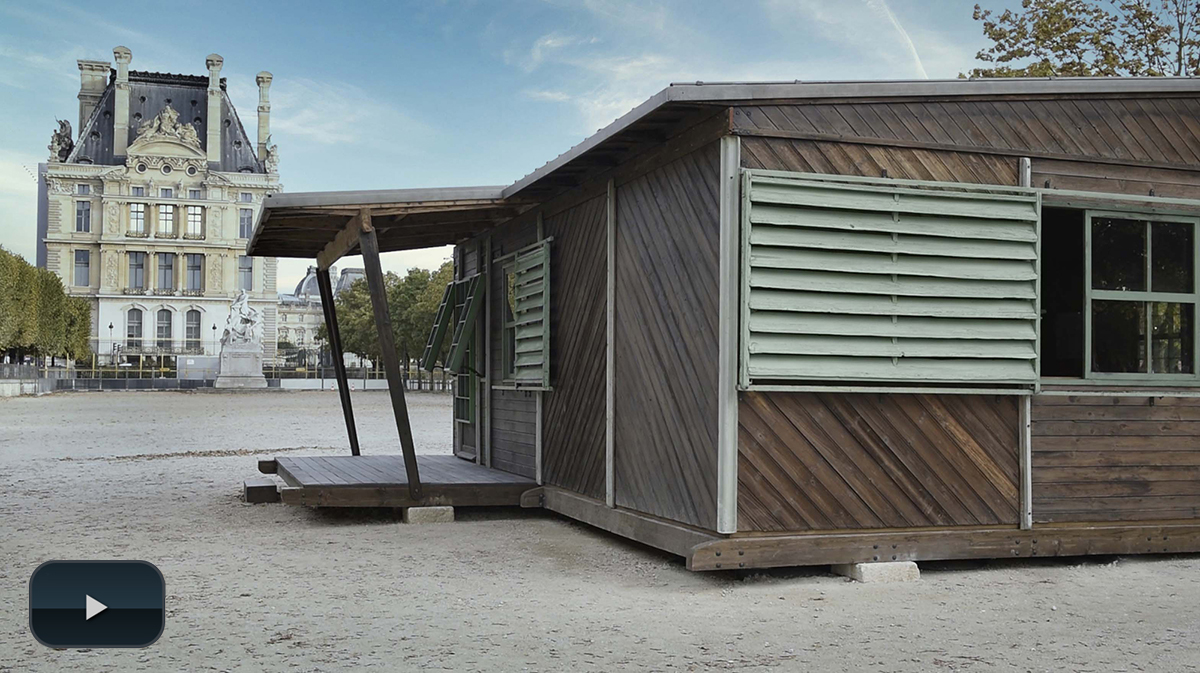“While composing a structure I’ve never felt that I was developing a technique for architecture. It’s my belief that any structural design is an architectural design. In my mind they are indissociable.”
Jean Prouvé, L’Avenir des structures
Recherche et architecture, No. 16, 1973
A testament to the close relationship between architecture and design, JEAN PROUVÉ’s facade panels are characterized by being lightweight, by enabling a flexibility of composition, and by their finely crafted finish.
Manufactured by ATELIERS JEAN PROUVÉ until 1953, these architectural components are designed to be incorporated into prefabricated constructions and quickly assembled on site. Forming the link between the interior and the exterior, they can also be equipped with elements to enhance comfort, such as ventilation systems or porthole windows.
Convinced of their potential on the building components market, Jean Prouvé included his panels in a catalogue of standard models from 1936 on, envisaging mass production for a variety of applications. Initially made in wood and steel, it was in aluminum that hopes for a real industrial production lay. With his Maxéville workshops, Jean Prouvé embarked on an ambitious project to transform the construction process for buildings, replacing artisanal construction with an industrial process.
ALUMINUM PANEL WITH PORTHOLES
FROM A METROPOLE HOUSE, 1950
Developed in 1949 for the prototype of the Tropique house, the porthole panel was used as one of the main construction components for the so-called Métropole houses designed in the same year. Entirely prefabricated with a steel structure and aluminum body, a few examples of these houses were initially produced by hand in Maxéville.
“Individual, lightweight and dynamic”, the Métropole house was characterized by the quality of its construction
elements, among which were the porthole panels. Once assembled, they are noteworthy in their isothermal and acoustic efficiency. The transition between inside and outside is managed by the addition of the portholes to admit daylight.
In 1950, despite the public’s enthusiastic reception at the Salon des Arts Ménagers not resulting in a single order,
the government’s proposal to show one or several examples of the Métropole house at the “Synthèse des Arts Majeurs” exhibition initiated by Le Corbusier, says a lot about the very special place this production was to hold in the history of modern architecture.
WOOD AND ALUMINUM PANEL WITH PORTHOLES
FROM THE BOUQUEVAL SCHOOL, 1950
Characterized by a lack of infrastructure, from schools to hospitals, via housing, the period of post-War reconstruction gave rise to the creation of a range of prefabricated architecture incorporating facade panels.
Taking part in a competition organized by the ministry of Education in 1949, Jean Prouvé designed a rural school whose components could be mass produced.
The constructor saw this brief as an opportunity to initiate a process of industrial production of economical constructions, suitable for several types of application.
In 1950, the government commissioned two prototype ensembles, one in Bouqueval in the Paris area, the other in Vantoux near Metz in eastern France. This commission enabled Jean Prouvé to perfect a previously developed process that had already proved its worth: a metal framework with axial portal frames, combined with different types of facade panels clad in aluminum.
Despite the success of the demonstration, these two schools remained the only examples ever made of the mass production so ardently hoped for by Jean Prouvé.
In their ingenious constructive system and the resulting aesthetic simplicity, the facade panels are historic pieces.
Epitomizing the visionary and resolutely modern mind of the ‘constructor’, they blend elegantly into contemporary interiors, where they take on a sculptural dimension.

